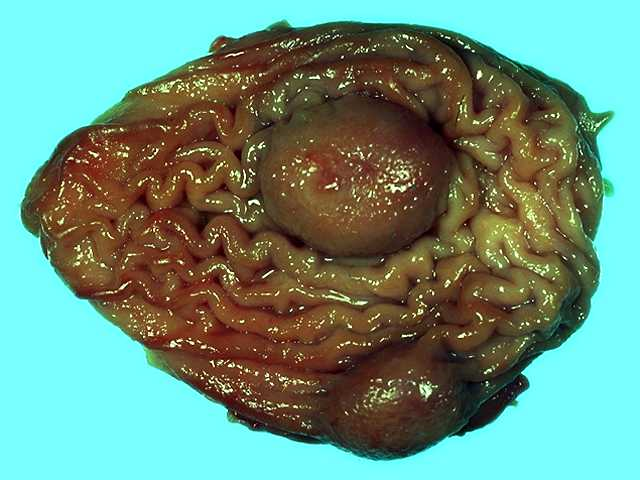Stomach Worms
(Physaloptera spp. and Cylicospirura spp.)
Physaloptera spp. and Cylicospirura spp. are spirurid nematodes that infect the stomach of wild and domestic cats. Physaloptera spp. are zoonotic, but of minor significance in humans.
Distribution
Physaloptera praeputialis has a worldwide distribution. Physaloptera rara has been reported in the United States, whereas P. pseudopraeputialis has been found in the Philippines [1]. Cylicospirura felineus is found in India [1], Australia, North America and Africa [1,2,3,4]. Cylicospirura subaequalis and C. barusi are found in Asia, C. heydoni and C. dasyuridis in Australia [3], and C. advena in New Zealand [5].
Clinical signs
Cats infected by Physaloptera spp. may be asymptomatic. Most cases of overt disease are associated with P. praeputialis infections. Clinical signs may include anorexia, intermittent vomiting, weight loss, diarrhoea and dark faeces (melena), which may be associated with anaemia and eosinophilia. Adult worms may be expelled out with vomitus. Cylicospirura infections have been mainly associated with nodules in the stomach of cats (Fig. 1). In wild felids, chronic vomiting, weight loss and intestinal perforation have been attributed to Cylicospirura species infection [6].

Figure 1. Cylicospirura spp. induced nodule in the stomach of a cat (Image credit: The University of Melbourne parasite image library)
Diagnosis
Physaloptera spp. infections in cats can be confirmed by faecal sedimentation (SOP 4). Flotation with high specific gravity solutions (e.g. 1.27) also is effective. Eggs of stomach worms are embryonated upon passage and are approximately 45-58 x 30-42 μm in P. praeputialis, 50 to 60 μm long in P. pseudopraeputialis and 42-53 x 29-35 μm in P. rara [1]. Eggs are quite clear (translucent) and may be difficult to see upon light microscopy. Eggs of Cylicospirura spp. (e.g., 29-38 x 13-22 μm in C. felineus and 34-36 x 22-24 μm in C. advena) are smaller than those of Physaloptera spp. Gastroscopy is the most efficient method for diagnosing Physaloptera spp. and Cylicospirura infections in cats. For Cylicospirura spp., multiple red slender nematodes may extend through a fistula within nodules.
Treatment
Off-label use of pyrantel pamoate (20 mg/kg PO, given 2-3 weeks apart) and ivermectin (0.2 mg/kg SC or PO, two doses given 2 weeks apart) are effective against Physaloptera spp. infections in cats. No treatment has been reported for Cylicospirura spp.
Prevention and Control
The control of Physaloptera spp. can be achieved by preventing cats from hunting and eating paratenic hosts and intermediate hosts.
Public health considerations
Cases of Physaloptera spp. infection in humans have been reported on rare occasions but the species involved have not been determined. Infection in humans are probably a result of ingestion of arthropod intermediate hosts or uncooked paratenic hosts.
References
[1] Bowman DD, Hendrix CM, Lindsay DS, Barr SC. Feline Clinical Parasitology. Iowa State University Press, Ames, USA. 2002.
[2] Junker K, Vorster JH, Boomker J. First record of Cylicospirura (Cylicospirura) felineus from a domestic cat in South Africa. Onderstepoort J Vet Res. 2006;73:257-262.
[3] Gregory GG, Munday BL. Internal parasites of feral cats from the Tasmanian Midlands and King Island. Aust Vet J. 1976;52:317-320.
[4] Crossland NA et al. First report of Cylicospirura felineus in a feral domestic shorthair cat in North America. JFMS Open Rep. 2015;1:2055116915593964.
[5] Clark WC. Cylicospirura advena n. sp. (Nematoda: Spirocercidae) a stomach parasite from a cat in New Zealand, with observations on related species. Syst Parasitol. 1981;3:185-191.
[6] Ferguson JA, Woodberry K, Gillin CM, et al. Cylicospirura species (Nematoda: Spirocercidae) and stomach nodules in cougars (Puma concolor) and bobcats (Lynx rufus) in Oregon. J Wildlife Disease 2011;47:140-153.
